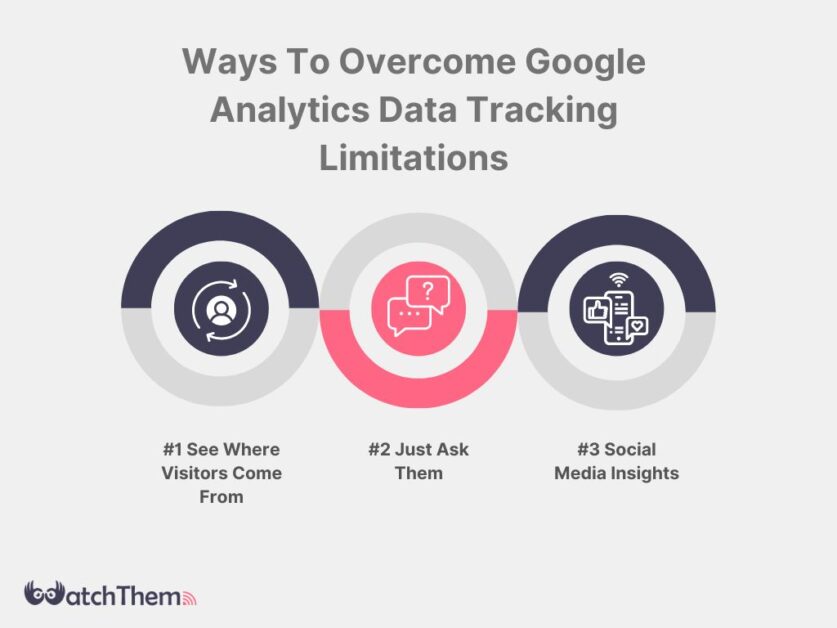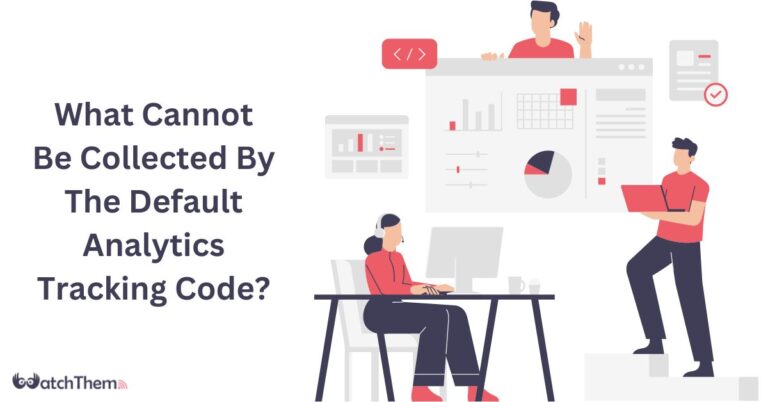Page Contents
In the world of online business, Google Analytics is a known tool for analyzing one’s website. Because of its vastness, GA can be confusing for new users and leave them with many questions, one of which is ‘What cannot be collected by the default Analytics tracking code?’
While this question may appear to be simple, the answer is quite complex, more than one might think. Websites are increasingly analyzing users’ behavior and browsing history to find their interests, as this allows them to provide more relevant content and ads to their audience.
Although web analytics tools such as Google Analytics are commonly used, it doesn’t mean that they have no flaws. This guide will analyze Google Analytics’ tracking code, its limitations, and how businesses can overcome them. But before answering what cannot be collected by the default analytics tracking code, let’s first discuss what tracking code even means!
What Is Google Analytics Tracking Code?
The Google Analytics tracking code is a piece of JavaScript code that you place on your website’s HTML source code. It is responsible for gathering information on the behavior of your website’s visitors. This data is then analyzed and saved by Google Analytics and then shown in GA’s reports to help the website owners better understand their audience.
Page views, session duration, traffic sources, and such are typically the type of data that Google Analytics’ tracking code collects. Now, you may wonder how GA finds this valuable data from your visitors without breaking any consent laws.
How Does Google Analytics Tracking Code Work?
The tracking code is put at the top (header) of every page on your website. Every page loads with this tracking code by getting copied and added to the website’s HTML source code. When a user visits the website, the tracking code is run on their browser and proceeds to collect various data, such as the pages they browse (on your website), how long is their stay, and where they have come from.
After collecting this data, the tracking code is sent to the Google Analytics servers, and the information can be seen right after a user’s visit or in real time.
The data from users’ visits is analyzed and put into various reports, all of which can show the behavior patterns of visitors and give you information about their most visited pages, average time spent, and more.
But this tracking code also comes with its limitations, as it cannot collect users’ personal data.
What Cannot Be Collected By The Default Analytics Tracking Code?
The user’s favorite website cannot be collected by the default Analytics tracking code. Respecting users’ privacies, Google Analytics’ tracking code does not have access to the favorite websites of users by using encryptions and security protocols.
The privacy of the users is a serious matter and if not respected, it can take you to court. That is why Analytics tracking codes, as well as many other data trackers, do not collect sensitive information such as credit card information and passwords and user’s favorite websites.
You might be wondering if GA does not have access to users’ favorite websites, then how can it do behavioral segmentation and divide audiences into groups? With what data does GA give us the reports on users’ interests?
What Data Can Analytics’ Default Tracking Code Collect?
It’s better to showcase what data Google Analytics Tracking Code contains with a real-life example. Imagine you own a small online bakery shop; after adding Google Analytics to your website, its tracking code can collect and show you data about:
- How many people visit your site daily,
- Which pages are most popular,
- Where do your visitors come from,
- What devices do they use.
For instance, if most of your visitors come from Instagram and love your chocolate cake pictures, you might post more about your chocolate cakes on Instagram to attract even more customers. This example showcases how Google Analytics tracking code works and how it can be beneficial, even for small business owners.
3 Ways To Overcome Google Analytics Data Tracking Limitations
Privacy issues and the design of web browsers are the main reasons for this limitation of Google Analytics, which cannot track a user’s preferred websites directly. Google Analytics has been specifically designed to capture the data about user interactions on your own site and not only their broader browsing habits across multiple sites. Here are some ways on how you can solve this limitation:


#1 See Where Visitors Come From
Google Analytics does not tell you all the sites that a visitor likes, but it can tell you where they were before visiting your site. This referral data provides you with an insight into some of their online browsing habits.
#2 Just Ask Them
At times, merely asking your customers is the simplest way to find out their interests. Use surveys on your site where you can directly ask the visitors about their favorite websites. It feels like discussing their likes and dislikes about the web, and if you keep it simple and short, they will most probably answer.
#3 Social Media Insights
Use social media to follow the digital footprints… better known as breadcrumbs. Analyze the trends and popular posts to make some predictions about where your target audience could be on the Internet.
Google Analytics will not show you the full picture of a user’s favorite websites, but each data you are able to collect gives a much better insight. Also, always remember to obey the rules of internet privacy, as it is crucial that you respect your visitors’ online space.
FAQs on The Default Analytics Tracking Code
Now we know what analytics tracking code is and how it works, and we also know the answer to the famous GAIQ exam, which was ‘What cannot be collected by the default Analytics tracking code?’ So, let’s get to other frequently asked questions about the tracking codes and the data they collect.
Q1. What Does Google Analytics Collect By Default?
Think of Google Analytics as a digital detective. It gathers data on who’s visiting your site, what they view the most, and how they get there, whether by clicking a link or typing an address, and also if one is staying on this page. It’s a monitoring system, but it is only for your website.
Q2. What Data Does The Analytics Tracking Code Collect?
The Analytics tracking code is a very useful measurement that you can use on your website. It helps you calculate the number of visitors and show how they jump from one page to another. It measures users’ visit duration, as well as identifying what device they are using. Analytics tracking code saves you time as it quickly provides crucial information about your audiences.
What Cannot Be Collected By The Default Analytics Tracking Code?: Final Words
User’s favorite websites is a data that cannot be collected by Analytics’ tracking code by default. Due to security and privacy concerns of users, information such as favorite websites, credit card information, social security numbers, and other personal data of users is encrypted and cannot be saved.
In this guide, we mentioned this limitation of the Analytics tracking code; but, we also provided you with ways such as surveys, to collect the desired (and probably personal) information of users.

